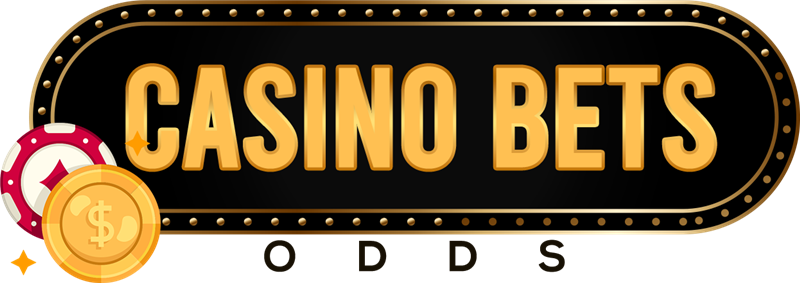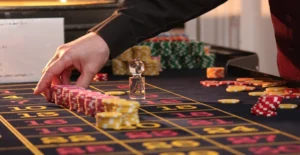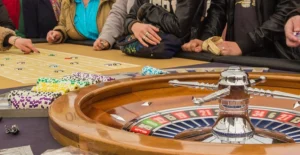Mastering the $1/$3 No-Limit Hold’em table is a common goal for many poker players looking to improve their game and their bankrolls. This stake level offers a great balance between accessibility for learning and the profit potential. Developing a sound 1-3 no-limit poker strategy is key to navigating the common tendencies of players at this level. By focusing on solid fundamentals and adapting to your opponents, you can significantly increase your win rate and enjoy more success at the tables.
Key Takeaways
- Play a tight and aggressive style, especially from early positions, to control the pot and isolate weaker players.
- Avoid limping; instead, open-raise with a strong hand range to define your hand and discourage multiple callers.
- Focus on value betting against passive opponents who tend to call too often, extracting maximum profit from your strong hands.
- Understand and utilize position to your advantage, as acting last in a betting round provides critical information and control.
- Manage your bankroll wisely and maintain mental discipline to weather the natural ups and downs of poker.
Introduction to 1-3 No-Limit Hold’em Strategy.
Welcome to the world of $1/$3 No-Limit Hold’em, a popular entry point for many players looking to sharpen their skills and potentially turn a profit. This stake level offers a great mix of players, from those just learning the ropes to more experienced individuals. Mastering $1/$3 No-Limit Hold’em requires a blend of solid fundamentals and strategic adjustments. It’s a game where understanding basic poker principles, like hand selection and betting, can lead to consistent wins if applied correctly. Many players at this level make common mistakes, such as playing too many hands or calling too often, which creates opportunities for those who adopt a more disciplined approach. By focusing on key strategies, you can start to see better results at the table. For instance, learning about different game variants can also be beneficial, such as exploring Ultimate Texas Hold’em to broaden your poker knowledge.
Here are some core concepts to keep in mind:
- Hand Selection: Not all hands are created equal. Playing fewer, stronger hands, especially from early positions, significantly improves your post-flop decision-making.
- Aggression: When you do decide to play a hand, playing it aggressively by raising or betting often puts pressure on opponents and allows you to win pots uncontested or build larger pots with your strong hands.
- Positional Awareness: Your position at the table dictates a lot about how you should play. Acting last gives you more information and control over the hand.
Many players at the $1/$3 level tend to be too passive, calling too frequently and rarely raising. This tendency makes them prime targets for players who adopt a tight-aggressive style and focus on value betting their strong hands. Don’t be afraid to bet big when you have a good hand; these players are often willing to call with weaker holdings.
Developing a winning strategy at $1/$3 No-Limit Hold’em isn’t about complex theories; it’s about consistently applying sound poker logic. We’ll break down the most effective tactics to help you navigate these games successfully.
Why $1/$3 Stakes Are Ideal for Learning & Profit
The $1/$3 No-Limit Hold’em tables are often seen as the sweet spot for many poker players. It’s a level where the competition is generally not overwhelmingly tough, but the stakes are high enough to make winning feel meaningful. This makes it an excellent training ground for developing solid poker skills without the extreme pressure or buy-ins of higher stakes. You can start to hone your strategy here, learning to read opponents and make smart decisions.
Many players find that $1/$3 is the first level where they can consistently show a profit if they play well. It’s a common stepping stone for those who want to play poker more seriously, maybe even part-time. If you can build a good win rate at these stakes, it’s a solid indicator that you’re on the right track.
Here’s why it’s so good:
- Accessible Buy-ins: The typical buy-in is around $300, which is manageable for most people looking to play casually or seriously.
- Good Mix of Players: You’ll find a range of skill levels, from beginners to more experienced players, giving you opportunities to learn and profit.
- Real-World Practice: It’s close enough to professional play that the lessons learned here translate well to higher stakes.
While some players might think they need to pull off fancy moves, a strong foundation in basic strategy is often more than enough to succeed at $1/$3. Focusing on playing tight, betting strong hands, and taking advantage of passive players can lead to steady profits.
It’s also a great place to start practicing concepts like hand ranges and pot odds, which are important for any serious poker player. You can learn a lot about how to adjust your play based on who you’re up against, whether they’re super tight or always calling. Getting a handle on these dynamics is key to long-term success. You can even find resources to help you improve, like poker training sites that offer courses tailored to different stake levels.
Tip 1 – Play Tight and Aggressive in Early Position
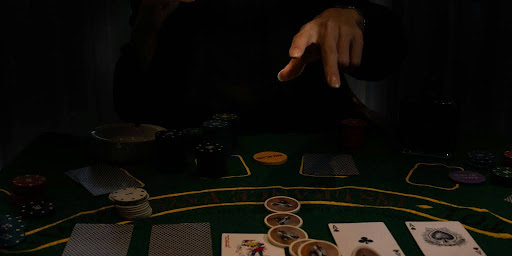
When you’re sitting in an early position at a $1/$3 No-Limit Hold’em table, meaning you’re one of the first players to act after the blinds, your strategy should be pretty straightforward: play tight and play aggressive. This means you should only be playing a small range of strong hands, and when you do decide to play a hand, you should usually be the one raising. It’s easy to get bored and want to play more hands, especially if you’re used to online poker, where you see way more action. But live poker, especially at these stakes, moves more slowly. You’ll see fewer hands per hour, so you need to make each one count. Focusing on strong starting hands from early position is your best bet for long-term success.
Why is this so important? Well, when you play a strong hand from early position and raise, you accomplish a few things. First, you build a pot when you likely have the best hand. Second, you thin the field, meaning fewer players will see the flop. Fewer players mean a better chance for your strong hand to win. Third, you gain information. If you raise and someone calls, you have a better idea of what they might have compared to if you just called their raise. It’s about making solid decisions before the flop to set yourself up for easier decisions after the flop. You want to be in a position where you’re often flopping top pair with a good kicker or better. Avoid getting caught up in the table’s pace; stick to your plan.
Here’s a general idea of what hands you might consider playing from the early position:
- Premium Pocket Pairs: AA, KK, QQ, JJ, TT
- Strong Broadway Hands: AK, AQ, AJ (suited and offsuit)
- Speculative Pairs: 99, 88 (depending on table action)
Remember, this is a guideline. You might adjust slightly based on how the table is playing, but the core idea remains: be selective and be aggressive. Don’t be the player who limps in with K-3 offsuit just because others are doing it. Stick to hands that have good potential to make strong post-flop hands. This disciplined approach helps simplify your game and reduces the number of difficult spots you find yourself in. It’s a key part of building a winning strategy, much like understanding basic Three Card Poker rules can help in different games.
Playing tight from an early position isn’t about being boring; it’s about being smart. It’s about setting yourself up for success by playing strong hands in a way that maximizes your chances of winning and minimizes the risk of making costly mistakes. You’re not trying to win every pot; you’re trying to win the most money over time.
Tip 2 – Avoid Limping: Open-Raise Wisely Pre-Flop
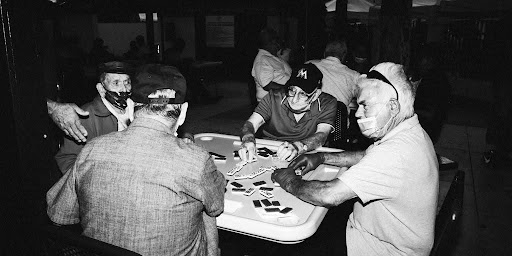
When you’re sitting at a $1/$3 No-Limit Hold’em table, you’ll see a lot of players just “limping” in. That means they’re just calling the big blind instead of raising. This is usually a sign of a weaker player, someone who doesn’t want to commit too many chips or doesn’t have a strong hand. You should almost always avoid limping.
Why is limping bad? For starters, it doesn’t build big pots when you have a strong hand. If you have pocket Aces, calling the big blind is a missed opportunity. You could have raised and started building a pot right away. Also, limping often invites multiple players into the pot. When more people are in a hand, it’s harder to win, and your strong hands might not be as strong anymore.
Instead of limping, you should be “open-raising.” This means being the first person to put money into the pot pre-flop by raising. What hands should you raise with? It depends on your position, but generally, you want to raise with hands that have a good chance of winning or can make strong hands post-flop.
Here’s a general idea of what hands to open-raise with from different positions:
- Under the Gun (First to act): Only your strongest hands. Think big pocket pairs (AA-QQ), AK, maybe AQ.
- Middle Position: You can loosen up a bit. Add hands like JJ-TT, KQ, AJ, AT, KJs.
- Late Position (Cutoff and Button): This is where you can play the widest range of hands. You can raise with many suited connectors, smaller pocket pairs, and a wider variety of Broadway hands.
Open-raising is about taking control of the pot. It shows strength and can help you win the pot right there, or at least get heads-up against a weaker player. It also makes your post-flop decisions much simpler because you’re usually starting with a stronger range.
Think about it: if you raise and only one other player calls, you’re in a much better spot than if five players limped in. You have a better chance of having the best hand, and you can often bet for value on the flop and beyond.
Tip 3 – Exploit Passive Opponents with Value Bets
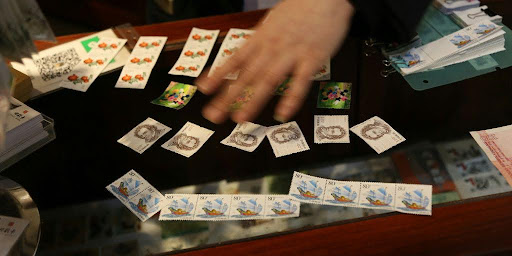
A lot of players at the $1/$3 tables are passive. They tend to call a lot, especially when they have something, but they don’t do much betting themselves unless they’ve got a monster. This is where you can really make some money. When you’ve got a strong hand, you want to bet it to get value from these players. They’re not going to fold easily, so you can keep betting on the flop, turn, and river, and they’ll often call you down with hands that are way worse than yours.
The key is to identify these passive players and then bet for value whenever you have a hand that you think is ahead of their calling range. Don’t be afraid to bet a decent amount, either. If you bet too small, they might just call with even weaker hands, and you miss out on potential profit. Think about what hands they might call with. If you have a top pair, a good kicker, and they’re calling your bets, they probably have a middle pair or even just a weaker kicker. You can keep betting and extract more chips from them.
Here’s a simple way to think about it:
- Identify Passive Players: Look for players who call bets frequently but rarely raise.
- Target with Value Bets: When you have a strong hand (like top pair or better), bet to get called by worse hands.
- Size Bets Appropriately: Bet enough to get value, but not so much that you scare them away if they only have a marginal hand.
It’s easy to get caught up in trying to bluff or make fancy plays, but against passive opponents, the simplest strategy is often the most effective. Just keep betting your good hands and let them pay you off. It’s like leaving money on the table if you don’t.
Remember, these players are often looking to hit something or just hang on with a decent hand. You can use this predictability to your advantage. If you’re playing a hand against someone who you know will call with any pair, and you have two pair, you should be betting every street. You’re not trying to trick them; you’re trying to get paid. It’s a straightforward way to build your stack, and it’s a big part of why playing tight and aggressive works so well at these stakes. You can find more tips on playing different hands by checking out blackjack tournament strategy.
Tip 4 – Understand Position Importance in $1/$3 Games
Position is everything in poker, and at the $1/$3 tables, understanding this concept can seriously boost your win rate. When you act after your opponents, you get to see what they do before you make your own decision. This is a massive advantage. You can control the pot size, decide when to bet for value, and even when to bluff more effectively because you have more information.
Think about it: if you’re the first to act, you’re basically guessing. You don’t know if your opponent has a monster hand or complete air. But if you’re last to act, you can react to their bets and raises. This puts you in the driver’s seat. You get to dictate the pace of the hand.
Here’s a quick breakdown of why position matters so much:
- More Information: You see your opponents’ actions before you act, giving you a significant edge.
- Pot Control: You can keep the pot small when you have a marginal hand or build it when you have a strong one.
- Bluffing Opportunities: It’s easier to bluff when you know your opponents are unlikely to call or raise.
- Value Betting: You can extract more money from your opponents when you have a strong hand because you can bet at the right times.
Playing in position allows you to make more informed decisions and exploit your opponents’ tendencies more easily. It’s a simple concept, but many players, especially at these stakes, don’t fully grasp its importance. They’ll play hands out of position that they should fold, and this is a costly mistake. Learning to play tight when out of position and aggressive when in position is a key step towards becoming a winning player. Mastering these basics can help you avoid common pitfalls and improve your overall poker game.
Being in position means you have the last say in betting rounds. This gives you the power to control the action and make better decisions based on what your opponents do. It’s like having a crystal ball, but instead of magic, it’s just good old-fashioned information.
Tip 5 – Use Hand Range Thinking Instead of Specific Hands
Instead of thinking about just one specific hand you hold, like Ace-King, it’s way more useful to think about the range of hands your opponent might have. This means considering all the possible combinations of cards they could be holding, given their actions. For example, if someone rises from an early position, they’re probably not calling with just any two cards. Their range likely consists of strong starting hands like pocket pairs (AA, KK, QQ, JJ, TT) and high-card combinations (AK, AQ, AJ).
Thinking in ranges helps you make better decisions because you’re not just reacting to your own cards, but to the probabilities of what your opponent holds. It’s like playing chess; you don’t just think about your next move, but also your opponent’s likely responses.
Here’s a simple way to start thinking about ranges:
- Early Position Raiser: Typically a tight range of premium hands (e.g., 77+, ATs+, KQs, AJo+).
- Late Position Caller: A wider range, including speculative hands and hands that play well in multi-way pots (e.g., suited connectors, small pairs, broadway hands).
- Button Raiser: Often a wide range, as they have a position on everyone else.
The more information you gather about a player’s tendencies, the more you can narrow down their likely range. For instance, a player who only raises with very strong hands has a much tighter range than someone who raises with a wide variety of hands.
When you start to consider ranges, you’re moving beyond just playing your own cards and beginning to play your opponent. This shift in perspective is a big step towards becoming a more profitable player at the $1/$3 tables. It’s about probabilities, not just certainties. You can find more about starting hands at the Texas Hold ’em Starting Hands Cheat Sheet.
This approach helps you decide whether to bet for value, bluff, or fold, based on how your hand stacks up against their probable holdings. It’s a more sophisticated way to play poker, and it’s definitely worth the effort to develop this skill.
Tip 6 – Employ Bluff and Semi-Bluff Tactics Effectively
Bluffing and semi-bluffing are key parts of a winning poker strategy, especially at the $1/$3 no-limit tables. It’s not just about having a strong hand; it’s also about making your opponents think you do. A well-timed bluff can win you pots you wouldn’t otherwise win, and a semi-bluff, which is betting with a hand that isn’t currently the best but has a good chance to improve, can put opponents in tough spots.
Don’t be afraid to pull the trigger with your bluffs. Many players are too passive and don’t bluff enough, which makes them predictable. When you bluff, you’re applying pressure and making your opponents consider every action they take. This can lead them to make mistakes, like folding better hands or calling with worse.
Here’s a general guideline for bluffing frequency:
- Flop: This is generally the best street to bluff. Hands often have a lot of potential to improve, and opponents might not have a strong read on your hand yet.
- Turn: You can still bluff here, but it’s usually less frequent than on the flop. Your opponent’s range might be narrowing, and they might be less likely to fold.
- River: Bluffing on the river is the riskiest. You should only do this with hands that have some potential to be good, or if you have a very strong read that your opponent will fold.
When you’re considering a bluff, think about your opponent. Are they the type to fold easily, or are they a ‘calling station’ that rarely folds? Bluffing a calling station is usually a losing proposition. Instead, target players who seem to be playing tight or who show signs of weakness.
A good bluff isn’t just about betting big; it’s about telling a believable story with your actions. Your bet sizing should make sense in the context of the hand you’re representing.
Tip 7 – Master Bet Sizing and Pot Odds for Value Extraction
Bet sizing is a big deal in poker, especially at the $1/$3 tables. It’s not just about how much you bet, but why you’re betting that amount. You want to get paid when you have a strong hand, and you want to make it tough for your opponents to call when they don’t have much. This is where pot odds come into play.
Pot odds are basically the ratio of the current size of the pot to the cost of a contemplated call. If you’re facing a bet and need to call $10 to win a pot that’s currently $30, you’re getting 3-to-1 pot odds. This means you need to win at least 25% of the time to break even on that call over the long run.
Understanding your outs and how they relate to the pot odds is key to making profitable decisions, especially when you’re drawing.
Here’s a quick breakdown:
- Flush Draws: Typically have 9 outs. If you need to call $10 into a $30 pot (3-to-1 odds), you need to win at least 25% of the time. With 9 outs, you have roughly a 16% chance to hit your flush on the turn and about a 32% chance by the river. So, if the pot odds are good enough, calling is often correct.
- Gutshot Straight Draws: Usually have 4 outs. These are less likely to win than flush draws. You’ll need much better pot odds to justify calling with just a gutshot.
- Overcards: If you have two overcards to the board (like two Kings when the board has lower cards), you have about 6 outs to make a pair. Again, the pot odds need to be favorable.
When you have a strong hand, you want to bet in a way that extracts the most value. This means betting an amount that your opponent is likely to call with a weaker hand, but not so much that they fold everything but the nuts. A common mistake is betting too small when you have a monster hand, leaving money on the table. Conversely, betting too large can scare away all but the strongest hands, reducing your potential winnings.
Think about what your opponent might call with. If they’re likely to call a bet of half the pot with a weaker pair, then betting half the pot is good. If they’re only going to call a smaller bet with that same hand, you might need to bet smaller to get them to continue. It’s a constant balance of getting maximum value without scaring them away.
It’s also important to consider implied odds. This is the money you expect to win on later streets if you hit your draw. If you have a flush draw and a lot of chips behind your opponent, you might be able to call even if the immediate pot odds aren’t great, because you expect to win a big pot later if you hit.
Tip 8 – Adjust Strategy Based on Opponent Tendencies (Loose, Sticky, etc.)
Poker isn’t just about your own cards; it’s a lot about the people you’re playing against. You’ll see all sorts of players at the $1/$3 tables. Some are super tight, only playing a few hands. Others are loose, playing almost anything that comes their way. Then you have the ‘sticky’ players who just don’t like to fold, even when they probably should.
The key is to notice these habits and change how you play to take advantage of them.
Here’s a breakdown of how to deal with different types:
- Loose-Passive Players: These guys play a lot of hands but rarely bet or raise unless they have something strong. They often call too much. With these players, you want to bet for value when you have a good hand. Don’t try to bluff them much, because they’ll just call. Slow-playing strong hands can also work well here.
- Loose-Aggressive Players: These players play many hands and bet or raise frequently, sometimes with weak holdings. They can be tough. Against them, you need to be selective with your starting hands and be ready to call or re-raise when you have a strong hand. Picking off their bluffs is important.
- Tight-Passive Players: These players play very few hands and usually only bet or raise when they have a monster. They are easy to spot because they’re often waiting for premium hands. You can often steal the blinds from them when they’re in late position. When they do show aggression, you can usually assume they have a very strong hand.
- Tight-Aggressive Players: These players play a limited range of hands but are aggressive when they do play. They are often the toughest opponents. You need to play your strong hands aggressively against them and be careful not to get involved in too many marginal spots out of position.
You’ll see a mix of these player types at any $1/$3 table. The best players are the ones who can spot these tendencies quickly and adjust their own game to exploit them. Don’t be afraid to change your approach based on who you’re up against. It’s not about playing one way all the time; it’s about adapting to win.
Tip 9 – Use Hand-Reading Tools Like the “Range Funnel”
Thinking in ranges is a big step up from just looking at your own cards. Instead of trying to guess exactly what your opponent has, you think about the types of hands they might have in a given situation. This is where the “Range Funnel” comes in handy. It’s a way to narrow down your opponent’s possible hands as the betting progresses.
Let’s break it down:
- Pre-flop: Based on their position and how they played the hand before the flop (did they limp, raise, or 3-bet?), You can start to build a general range of hands they might hold. For example, someone raising from an early position is usually doing so with a tighter, stronger range than someone raising from a late position.
- Flop: After the flop, you look at the board texture and how your opponent acts. If they bet strongly, their range might narrow to hands that hit the flop well. If they check, their range might widen to include weaker hands or draws they don’t want to bet yet.
- Turn & River: With each subsequent street, you continue to refine the range. A bet on the turn might eliminate certain hands from their range, while a check might keep them in. By the river, you should have a much clearer picture of the specific hands your opponent is likely to be holding.
This process helps you make better decisions about betting, calling, or folding. It’s not about being psychic; it’s about logical deduction based on observed actions. For instance, if an opponent consistently bets big on the flop and turn, and then checks the river, you can infer they likely have a medium-strength hand they don’t want to bet for value but also don’t want to bluff catch with. This kind of thinking is key to improving your Same Game Parlay strategy.
You’re not trying to put your opponent on one specific hand. Instead, you’re trying to figure out the most probable hands they could have based on their actions. This allows you to make more informed decisions, especially when you’re considering a bluff or a value bet.
Tip 10 – Bankroll Management and Mental Discipline at $1/$3
Look, playing poker at the $1/$3 level is fun, but it’s also easy to get carried away. You’ve got to have a plan for your money, and more importantly, a plan for your head. Without these, even the best strategy can go south fast.
First off, bankroll management. This isn’t just about having enough money to buy into the game; it’s about having enough to handle the swings. A common suggestion is to have at least 20 to 30 buy-ins for the stake you’re playing. So, if you’re playing $1/$3, and a typical buy-in is $300, you should ideally have $6,000 to $9,000 set aside just for poker. This way, a few bad sessions won’t wipe you out. It’s about playing with money you can afford to lose, and not letting short-term results affect your long-term game. Think of it like having a dedicated poker bankroll – it keeps your personal finances separate.
Here are some key points for managing your money and your mind:
- Set Session Goals: Decide beforehand how much you want to win or how much you’re willing to lose in a single session. If you hit your win goal, consider quitting while you’re ahead. If you hit your loss limit, walk away. This prevents chasing losses.
- Don’t Chase Losses: This is a big one. When you’re down, the urge to win it all back quickly can be overwhelming. Resist it. Stick to your strategy and don’t make impulsive plays just to get back to even.
- Separate Profit from Buy-ins: Once you’re up a buy-in or two, try to mentally (or even physically) separate that profit. This can help you make better decisions, as you’re not as afraid to risk money that isn’t part of your original stake for that session.
The biggest mistake people make is thinking one session defines their skill. Poker is a long game. You’ll have good days and bad days. The goal is to be profitable over hundreds or thousands of sessions, not to win every single time you sit down.
Mental discipline is just as important. You’ll face downswings, bad beats, and frustrating opponents. It’s how you react that matters. Stay calm, focus on making good decisions, and don’t let emotions dictate your play. If you find yourself getting angry or tilted, take a break. Step away from the table, clear your head, and come back when you’re feeling focused. Remember, the players who consistently win are the ones who can manage their emotions and stick to a solid plan, even when things aren’t going their way.
Building a Profitable $1/$3 No-Limit Poker Routine
So, you’ve absorbed all the tips and tricks, and now it’s time to put them into practice. Building a solid routine is what separates players who just play from those who actually win.
First off, think about your game selection. Not every table is created equal. Look for tables with players who seem a bit too loose or passive. These are the players who will pay you off when you have a strong hand. It’s not about picking on weaker players, but about putting yourself in spots where you have a better chance to win chips. A good rule of thumb is to find games where you’re not the tightest player at the table.
Your pre-game preparation matters too. Before you even sit down, make sure you’re mentally ready. Poker requires focus, and if you’re tired or distracted, you’re going to make mistakes. Maybe grab a coffee, do some light stretching, or just take a few deep breaths. Treating poker like a serious endeavor, even at the $1/$3 level, is key to long-term success.
Once you’re at the table, stick to your plan. Don’t get swayed by what others are doing. If your strategy says to fold a hand, fold it. If it says to raise, raise. Consistency is your friend. Here’s a quick look at how you might structure your play session:
- Pre-Game: Mental preparation, review strategy.
- Table Selection: Find profitable games.
- In-Game: Stick to your tight-aggressive style, focus on value betting, and adjust to opponents.
- Post-Game: Review your play, identify mistakes, and plan for the next session.
It’s also smart to review your play after you’re done. What hands did you play well? Where did you make mistakes? Even if you had a winning session, there’s always something to learn. This kind of self-analysis is how you get better. You might even consider looking into some poker training sites for more structured learning, as many offer courses tailored to specific stakes like $1/$3 no-limit hold ’em.
Remember, poker is a marathon, not a sprint. Building a profitable routine means being disciplined, consistent, and always looking for ways to improve. Don’t get discouraged by bad beats or losing sessions; focus on making the best decisions possible, and the results will follow over time. It’s about playing smart, not just playing a lot.
Finally, don’t forget about bankroll management. Even with a solid strategy, you need enough money set aside to handle the natural swings of the game. If you’re playing with money you can’t afford to lose, you’ll be too scared to make the right plays. Keep your poker bankroll separate from your everyday expenses. This helps maintain emotional control and allows you to play your best game without added pressure. For more on managing your funds, you can check out resources on bankroll management.
Frequently Asked Questions
What exactly is $1/$3 No-Limit Hold’em?
Playing $1/$3 No-Limit Hold’em means the blinds are $1 and $3. It’s a popular game for new players because the stakes aren’t too high, making it a good place to learn and try to win some money.
How careful should I be about the hands I play?
It’s smart to play only the best hands, especially when you’re not in a late position. Many players at this level call too much, so by playing strong hands, you can make it easier for yourself to win pots and avoid tough spots.
Should I bluff a lot in these games?
Generally, no. Most players at $1/$3 call too often. It’s usually better to bet when you have a strong hand and let them pay you off, rather than trying to bluff them. Save your bluffs for when you really need them.
How do I get paid when I have a strong hand?
When you have a good hand, like a pair or better, keep betting. This is called a ‘value bet.’ Since many players will call, you can win more chips by betting when you think you have the best hand.
Why is my position at the table so important?
Knowing where you are at the table is super important. When you act after your opponents, you get to see what they do first. This helps you make better choices about betting or folding.
How should I think about my opponent’s hands?
Instead of thinking about just one specific hand you might have, try to think about all the possible hands your opponent could have. This helps you make smarter decisions against a wider range of plays.
Can I actually make money playing $1/$3 No-Limit Hold’em?
Yes, you can. By playing smart, being patient, and paying attention to how others play, you can do well. Remember to manage your money and stay calm, even when you’re not getting good cards.
What should I do when I’m not getting good cards?
It’s normal to have times when you don’t get good cards. The key is to stay focused on making the best possible move with the cards you do get. Don’t get discouraged; just keep playing your best strategy.
Daniel Chase is a seasoned casino analyst and iGaming writer with over 10 years of experience in the online gambling industry. He specializes in game strategy, casino odds, and player-focused reviews. Daniel is passionate about helping players make smarter decisions through transparency, real data, and honest insight.
